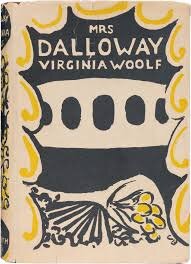Virginia Woolf said that in Mrs Dalloway, she wanted to contrast the world view of the healthy with that of the mentally ill. She also examines the themes of life and death, and criticises the social system by showing it in action.
The novel describes a day in the life of Clarissa Dalloway, a woman who is self-conscious about her role in London high society in post-First World War England. As she gets ready to host a party that evening, she wonders about her choice of husband. She married the reliable Richard, rather than the mysterious and demanding Peter.
The other main character is young Septimus Smith, a World War l veteran suffering from shell shock and hallucinations about his dead friend. Educated and decorated in the war, he now feels detached from society and from his wife.
Published in 1925, Mrs Dalloway is one of Woolf’s best-known works. All the action, apart from the flashbacks, takes place on a day in mid-June 1923. Each scene closely tracks the momentary thoughts of a particular character.
The novel contrasts the privileged social sophistication of Clarissa Dalloway with the post-war traumatic stress of Septimus Smith, the young working class soldier. They walk the same streets but experience reality in completely different ways.
Mrs Dalloway is a complex, compelling novel which makes the reader think about life and death. Our lives are an elaborate and exquisite collage of moments, each one beautiful and powerful when reflected upon. It is one of Woolf’s most popular novels because it’s more intimate, personal and warm than her other books.
The novel is linguistically inventive and has a vast amount to say about its characters. Woolf handles their situations with decorum and respect. She also incorporates a level of psychological realism that Victorian novels were never able to achieve. With intensely detailed portraits of the characters’ lives, the author treats us to a wonderful feast of contrast between life and death from the very first page.
What is most impressive about Mrs Dalloway is the infinite array of tones and voices that Woolf is able to switch between so precisely. Her multi-faceted characterisation allows the point of view to be constantly shifted from one character’s stream of consciousness to another’s. Her ‘stream of consciousness’ style of writing has attracted as well as deterred readers.
It’s one of the most fascinating and colourful ways of writing. The thoughts, feelings and reactions of characters, combined with an objective narrative, have a personal allure. Her writing style allows readers into the minds and hearts of her characters. The mediocre reviews of the novel are mainly down to those who don’t enjoy her style of writing, which, of course, won’t suit everyone.
The streets of London are alive with multitudes; the parks are buzzing with lovers and strollers, as well as animals, birdsong and trees, sunlight and clouds, impressing their forms on every scene. Life is always pulsing. As a novel that provides such a profound insight into life, Mrs Dalloway is filled with emotion and sentiment. It’s the small pleasures, as well as the great sensations and memories that help us endure.




